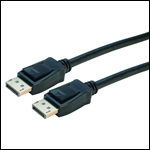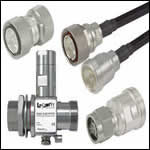Have It Your Way: Custom Manufacturing Do’s and Don’ts
Custom Manufacturing Do’s and Don’ts
By David Fallon, Internet Marketing Strategist, L-com
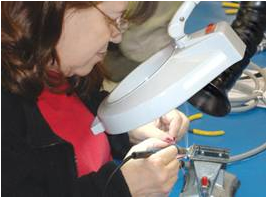 Specifying the connectivity equipment in an electronic or wireless system has always been a tricky process. Many standards organizations have helped by providing a common set of specifications to which all similar cables and connectors must adhere, but there is no way one standard can meet the requirements of every application that arises in the real world. Because of this, many manufacturers in the United States and abroad offer custom manufacturing services to meet the unplanned-for needs of their customers. If you have an application that can’t be satisfied with commercial off-the-shelf (COTS) products, here’s what you need to know before having a custom product built.
Specifying the connectivity equipment in an electronic or wireless system has always been a tricky process. Many standards organizations have helped by providing a common set of specifications to which all similar cables and connectors must adhere, but there is no way one standard can meet the requirements of every application that arises in the real world. Because of this, many manufacturers in the United States and abroad offer custom manufacturing services to meet the unplanned-for needs of their customers. If you have an application that can’t be satisfied with commercial off-the-shelf (COTS) products, here’s what you need to know before having a custom product built.
What to know before requesting a quote
Before anyone makes anything, you must get a quote from the manufacturer proposing the three common factors for any job: price, lead time, and minimum order quantity (MOQ). It helps if you can get quotes from a couple of different vendors, and plan to go deeper than just a simple description when you draw up your request for quote (RFQ). Because this is a custom product, different manufacturers may interpret your instructions differently, and so comparing quotes may not be apples-to-apples. Here are some tips for your RFQ to ensure you receive the right quotes back.
- Stick to the standards. Obviously, if a standard product would do the job, you wouldn’t need a custom. However, standards can still help to shortcut some of the specifications you need. For instance, if you need a D-subminiature cable at a custom length, but the wiring is the standard specified by EIA/TIA RS-232, make sure to put that in the RFQ. That will simplify things and help the manufacturers align their capabilities with your needs.
- Clarify the differences. Once you list the specifications, now is the time to list in detail all the ways your custom product is different from something the manufacturer may have available off-the-shelf. If you know of an item that the manufacturer already carries that is similar, state all of the differences between your item and the COTS item.
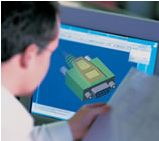 List your “nice-to-haves” separately. Often, there is a product that would be ideal for your application, but there are some specifications with some give to them. Don’t be afraid to let the manufacturers know this before they quote, as being flexible can often yield better pricing, MOQs, or lead times. If your cable must be 18 feet long, but you can live with a 20-foot long cable, the manufacturer may be able to adjust an already finished 20-foot COTS cable, saving time and money, rather than cutting a new cable to the specified length and starting from scratch.
List your “nice-to-haves” separately. Often, there is a product that would be ideal for your application, but there are some specifications with some give to them. Don’t be afraid to let the manufacturers know this before they quote, as being flexible can often yield better pricing, MOQs, or lead times. If your cable must be 18 feet long, but you can live with a 20-foot long cable, the manufacturer may be able to adjust an already finished 20-foot COTS cable, saving time and money, rather than cutting a new cable to the specified length and starting from scratch.- What do you need to place an order? If you just need “best price, best lead time, and best MOQ,” then state that, but if you really need the finished custom product on your dock within two weeks, you have to let the manufacturer know that ahead of time. Usually, of the three quote factors (pricing, lead time, and MOQ), you can get two of the factors pretty close if you’re willing to give on the third factor. So, if you need the product in two weeks, and you can’t order more than 25 pieces, let the manufacturer know before they quote, as those factors will necessarily affect the price. If you need a certain price and lead time, then the MOQ may be affected. If you need a certain quantity at a certain price, the manufacturer may be able to meet your needs at an extended lead time. The more information you provide, the better quotes you will receive.
- Finally, expect further discussion. Custom products often generate a host of questions; expect this and be available to answer them. If you are too busy to talk to the manufacturer and answer simple questions, there are bound to be headaches later on. Usually, an engineer or technician must set up a custom product job before the production team can begin working. If you can talk directly to this engineer or technician, you can often iron out unexpected details in advance.
Know your vendor
With more and more companies offering custom production services, you have more options in choosing your custom manufacturing partner, but always beware of working with an unfamiliar vendor, no matter how good the quote looks. Some manufacturers are better at some products than others, and they may quote something they’re not as good at just to be able to respond to your request. Look at the COTS products they already make, and if they don’t make anything remotely like your custom product, be a little wary of their reply. It’s often a good idea to ask for a sample or first-run proof, but sometimes even this can be misleading. Some manufacturers will spare no expense making the perfect proof, but cut corners in the actual manufacturing process.
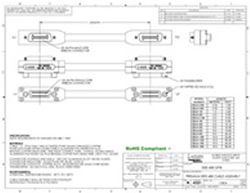 Usually, after receiving the purchase order and before they start building, the manufacturer will create a 2D engineering drawing or spec-sheet and bill-of-materials (BOM) document and let you approve it. If that is the case, make sure all of the specifications you have are called out. Once you approve the drawing, that document will guide the production process more than any other, and will be the document that any quality control (QC) measures will use in evaluating the finished product. It is essential that the manufacturer does NOT start work until the drawing is correct.
Usually, after receiving the purchase order and before they start building, the manufacturer will create a 2D engineering drawing or spec-sheet and bill-of-materials (BOM) document and let you approve it. If that is the case, make sure all of the specifications you have are called out. Once you approve the drawing, that document will guide the production process more than any other, and will be the document that any quality control (QC) measures will use in evaluating the finished product. It is essential that the manufacturer does NOT start work until the drawing is correct.
A complete QC process is also important. Ask the manufacturer about their QC measures and if they will provide a certificate of conformance (CoC) before they ship the finished product to you. Even if they do provide all the documentation of a good QC process, make sure you do your own QC when the product arrives. Custom products are notoriously prone to manufacturing problems because the engineers, technicians, and production personnel are not used to building exactly what you need. However, if you’ve taken all of the steps above and have a tight QC process, your order should produce the product you need even when no one has it off-the-shelf.
David Fallon joined L-com in 2002 as a member of L-com’s award-winning customer service department. After proving to have a technical aptitude for connectivity products, David moved to and eventually rose to supervise L-com’s technical support and custom product support groups. Today, David works to communicate L-com’s brand advantages to customers and potential customers through online media. David has a B.A. in philosophy and communications from the University of Massachusetts.
